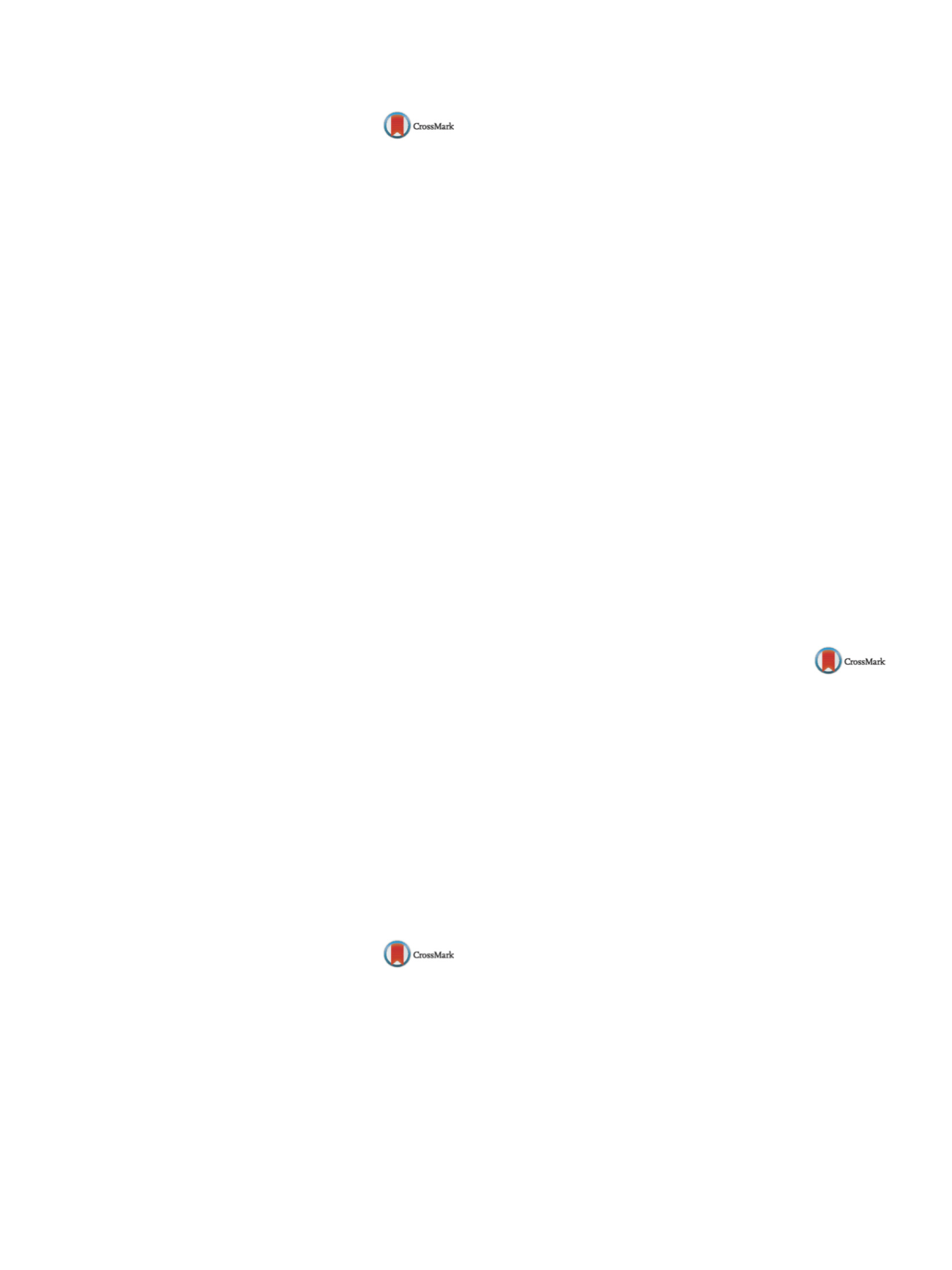

S858
25th European Congress of Psychiatry / European Psychiatry 41S (2017) S847–S910
EV1379
Example of alert and reporting system
of scopolamine poisoning among
Parisian cocaine users at regional,
national and European levels
A. Batisse
1 ,∗
, C. Chevallier
1, J. Azevedo Correia
2, M. Martinez
3,
G. Hoizey
4, M. Chèze
4, S. Buscail
2, M. Deveaux
4, S. Djezzar
1,
B. Sandrine
2, D. Samira
11
Groupe hospitalier Lariboisière/Fernand-Widal/Saint-Louis, CEIP,
Addictovigilance, Paris, France
2
Health regional agency ARS, Île-de-France, direction de la santé
publique, Paris, France
3
French Monitoring Centre for Drugs and Drug Addiction OFDT, Unit
emerging trends and new drugs, Paris, France
4
Laboratoire Toxlab, Paris, France
∗
Corresponding author.
Introduction
In the literature, few intoxications are related to
scopolamine due to its presence in cocaine, heroin or even in coun-
terfeit rohypnol tablets. Nonetheless, during summer 2016, several
cases of non-fatal intoxication appeared in the region of Paris.
Objectives
Demonstrate how clinical detection of rare toxic
events are fostered by exchanges in close collaboration with dif-
ferent territorial level.
Aims
Improve the detection of short toxic epidemic.
Methods
Suspected cases of scopolamine poisoning notified
to Parisian Addictovigilance centre were reported. Information
shared through different levels of the alert process contributed to
strengthen their assessment.
Results
Seventeen cases of probable scopolamine poisoning
among cocaine users were registered between the 6 and 24 of July.
In the first 4 cases, toxicological analysis, of blood samples were
scopolamine positive, with high concentration between 7 ng/mL
and 25 ng/mL (usual therapeutic range: 0.1 to 1.1 ng/mL). A col-
lected sample of this cocaine powder had a purity of 23.2%, with
15.2% of scopolamine. Half time of scopolamine is longer than half
time of cocaine (3–8 hours versus 1–2 hours): this could explain
why the observed effects lasted over 24 hours (8/17). Main clini-
cal features were mydriasis (15/17), high blood pressure (12/17),
tachycardia (13/17), behavioural disorder with agitation (13/17),
hallucinations (5/17), and coma (8/17). Practitioner’s respon-
siveness and the extensive information sharing [MM1] between
regional and European level were congruent.
Conclusions
Adulterated street drugs can lead to short toxic epi-
demic which could be unnoticed. Emerging event should require
careful assessment with linkage between risk assessors and risk
managers.
Disclosure of interest
The authors have not supplied their decla-
ration of competing interest.
http://dx.doi.org/10.1016/j.eurpsy.2017.01.1709EV1380
The perception and attitudes of
nursing staff in state psychiatric
hospitals regarding the causes and
treatment of substance abuse and
effecting factors
L. Baysan Arabacı
1 ,∗
, E. Engin
2, N. Yetmis¸
3, G. S¸ en
4, T. Ozturk
51
Izmir Katip Celebi University, Health Science Faculty Division of
Nursing, Izmir, Turkey
2
Ege University Nursing Faculty, Psychiatry Nursing Department,
Izmir, Turkey
3
Ege University, Ege University Medical Hospital, Izmir, Turkey
4
Beylikdüzü Final Okulları Adnan Kahveci Mah., Avrupa Cad. No: 64,
˙Istanbul, Turkey
5
Yüzüncü Yıl University, Faculty of Medicine Hospital, Van, Turkey
∗
Corresponding author.
Objective
This studywas performedwith the aims of determining
the perceptions of nursing staff in psychiatric hospitals regarding
the causes and treatment of substance addiction as well as their
attitudes towards people with substance abuse problems.
Method
This study was carried out with 389 nurses working at
5 state psychiatry hospitals in Turkey. In this study, demographic
questionnaire, the causes of drug abuse scale (CADAS), drug abuse
scale (CUDAS), attitudes scale (AS), and a demographic question-
naire were used. Independent sample
t
-test, variance, correlation,
and linear regression analyses were used.
Results
In this study, 82.8% of the nurses were female, and the
mean age was 33.79
±
7.58. We found that the demographic char-
acteristics of the nurses did not affect their perception regarding
the causes of addiction and treatment (
P
> 0.05); but it did have an
effect upon their attitude towards people with substance use prob-
lem (
P
< 0.05). Also, it was established that there was a negative
relationship between their perception regarding causes of sub-
stance misuse and their attitude towards a person with substance
use problem; and a positive relationship between their perception
regarding substance misuse treatment and their attitude towards
the person with substance use problem (
P
< 0.05).
Conclusion
Nursing staff working in psychiatric hospitals in
Turkey have the perception that a person takes substances in order
to “copewithproblems”and for reasons pertaining to his/her “social
environment”. Nursing staff tends to indicate a negative attitude
towards persons with substance abuse problems, such distancing
themselves socially from the patients.
Keywords
Nurse; Addiction; Substance abuse; Treatment;
Psychiatry hospital
Disclosure of interest
The authors have not supplied their decla-
ration of competing interest.
http://dx.doi.org/10.1016/j.eurpsy.2017.01.1710EV1381
Evaluation of dynamics of
neurocognitive indicators and
pathological craving in patients with
dependence on synthetic
cannabinoids during use of
microwave resonance therapy
N. Bokhan
1 ,∗
, A.F. Abolonin
2, I.I. Belokrylov
21
Mental Health Research Institute, Tomsk National Research Medical
Center, Russian Academy of Sciences, Administration, Tomsk, Russia
2
Mental Health Research Institute, Tomsk National Research Medical
Center, Russian Academy of Sciences, Addictive States Department,
Tomsk, Russia
∗
Corresponding author.
Background
There is no unequivocal estimation of influence of
synthetic cannabinoids on health of the users, their influence
on neurocognitive functions and their correction with use of
microwave resonance therapy (MRT).
Objective
To evaluate dynamics of pathological craving and neu-
rocognitive functions in patients with dependence on synthetic
cannabinoids during use of MRT.
Materials and methods
Thirty-two patients (main group with
dependence on synthetic cannabinoids with MRT) and 38 patients
(control group with medication and without MRT) were exam-
ined. Craving was evaluated with “Drug Craving Scale”; efficiency
with CGI. For evaluation of psychophysiological functions we used
methods: “number square”, ‘balance-tranquility’, “verbal mem-
ory”, “linear visual estimation”, “exclusion of the word”.
Results and discussion
After therapy, stopping of symptoms of
pathological craving was observed in the main group as 29.6% as
more than in control group, improvement according to CGI as 37.1%
as more than in control one. The evaluation of neurocognitive indi-
cators was conducted. Attention: in the main group improved by


















